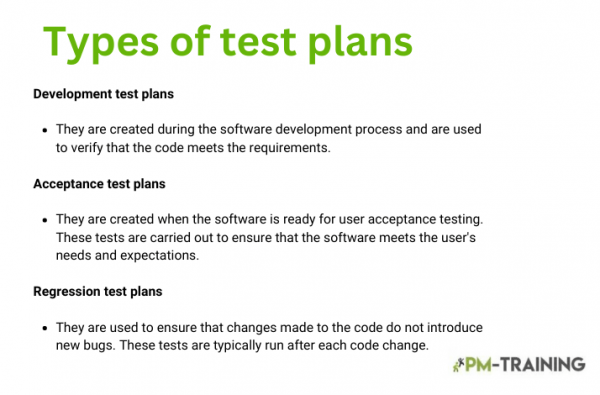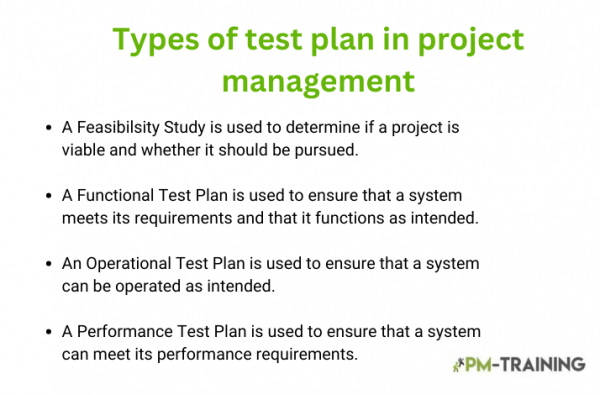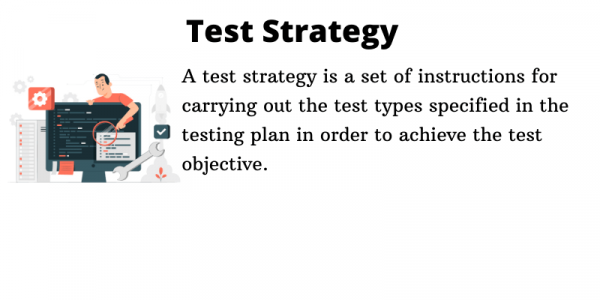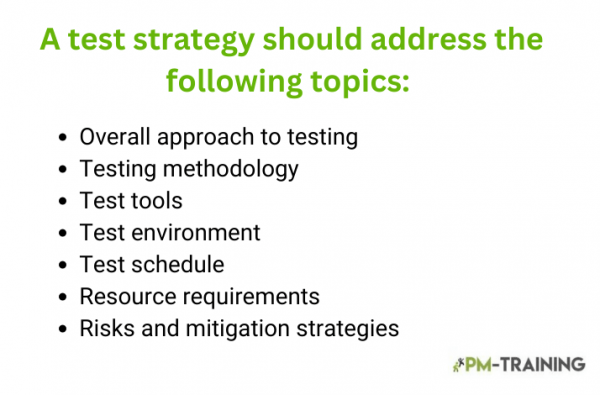There is often confusion between a test plan and a test strategy in project management. In project management, there is a distinction between a test plan and a test strategy.
The test plan vs test strategy debate often comes down to scope. A test plan is a document that outlines the scope, approach, resources, and schedule of a testing effort.
… and it also includes the test team’s roles and responsibilities.
- Types of test plan
- What test strategy consists of?
- Types of test strategies
- Examples of test plans and test strategies
- Test plan vs Test strategy
- What is a Test Plan?
- What is Test Strategy?
- Why are Test Strategy and Test Planning important?
- What are the main differences between a test plan and a test strategy?
A test strategy, on the other hand, is a high-level document that describes the overall approach to testing for a project.
A test plan is more focused on the details of the testing effort, while a test strategy is more concerned with the overall direction of the testing. As such, the test plan is usually a more detailed document than the test strategy.
Types of test plan
A test plan template is a document that outlines the following:
- Scope
- Objectives
- And Approach for testing a software application.
It is used to define the testing strategy for a project and provides a detailed roadmap for carrying out testing activities.

In IT for example we can find that there are typically three types of test plans:
- Development
- Acceptance
- Regression

On the other, in a more traditional Project Management approach, we can typically find four test plans in project management:
- Feasibility Study
- Functional Test Plan
- Operational Test Plan
- Performance Test Plan

What test strategy consists of?
A test strategy is an outline of the objectives, goals, and approaches that a team will take when testing a software application. It is usually created at the beginning of a project when the requirements are still being finalized.
It is then used to guide the development of the test plan, which is a more detailed document that covers the specifics of each test. The strategy should be tailored to the specific needs of the project and should be based on the project’s size, complexity, and risks.

Creating a comprehensive and effective test strategy is critical to the success of any software project. Without a well-defined strategy, a team will likely miss important risks and issues, which can lead to problems down the road.
A good test strategy will help to ensure that all aspects of the project are properly tested and that the final product is of high quality. It is typically created by the project manager or the testing team lead. The test strategy should be aligned with the overall project goals and objectives.
It should be reviewed and updated as needed throughout the project. The test strategy should be made available to all project stakeholders.

Some of the key decisions that need to be made in a test strategy include:
- What types of testing will be conducted? (e.g. functional testing, performance testing, security testing, etc.)
- Who will be responsible for conducting each type of test?
- What tools and resources will be needed for testing?
- How will the testing be structured? (e.g. which phases, iterations, or milestones)
- When will testing be performed? (e.g. during development or after release)
Types of test strategies
There are various types of test strategies that can be used to assess the quality of a software system.
Some of the most common types of test strategies include:
- Functional testing
- Load testing
- Performance testing
- Security testing

No single test strategy is likely to find all defects in a software product. Which test strategy is used depends on the individual software product and the resources available.
Examples of test plans and test strategies
There are many different ways to approach testing, and the strategy you choose will depend on the specific goals of your project.
PM Training will give you some examples of test plan test strategies that you can use in your own projects.
One common test plan strategy is called black-box testing.
This approach treats the system under test as a “black box” – meaning that the testers do not have any knowledge of the internal workings of the system. Instead, they focus on the inputs and outputs of the system and test how the system responds to different inputs.
Another common test plan strategy is called white-box testing.
This approach is the opposite of black-box testing, as testers have knowledge of the internal workings of the system. This allows them to specifically target potential vulnerabilities and test the system more thoroughly.
Test plan vs Test strategy

Another key difference between a test plan and a test strategy is that a test plan is usually created by the project manager or lead tester, while a test strategy is typically created by the head of the software development organization.
What is a Test Plan?
A test plan is a document that outlines the testing strategy for a software product. It includes a list of the features to be tested, the testing approach to be used, the resources required, and the schedule for testing.
What is Test Strategy?
A test strategy is a high-level plan that defines how testing will be conducted for a project. It consists of a series of decisions that need to be made in order to ensure that testing is carried out effectively and efficiently.
Why are Test Strategy and Test Planning important?
Test strategy and test planning are important for a number of reasons. They help ensure that your testing is efficient and effective and that you are testing the right things. A good test strategy will also help you to avoid overlooking any important aspects of your product.
What are the main differences between a test plan and a test strategy?
While a test plan is a document that outlines the scope, approach, resources, and schedule of a software testing effort. A test strategy, on the other hand, is a high-level document that provides an overall direction for testing. It should answer the question of why you are testing, what you are testing, and how you are testing.
